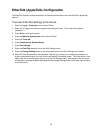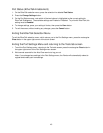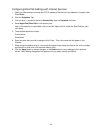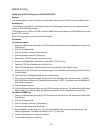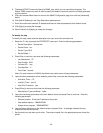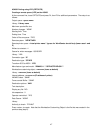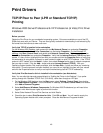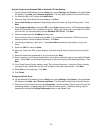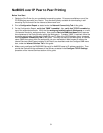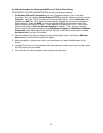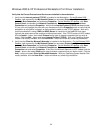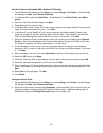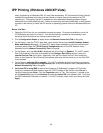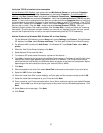50
Add the Printer to the Windows 2000 or Windows XP\Vista Desktop
1. On the Windows 2000 desktop, from the Start menu, select Settings, then Printers. On the Windows
XP desktop, from Start, select Printers and Faxes. The Vista path is Start\Control Panel\Printer(s).
2. On Windows 2000 or XP, double-click Add Printer.
3. When the "Add Printer Wizard" screen displays, click Next.
4. Select Local Printer and deselect "Automatically detect and install my Plug and Play printer." Click
Next.
5. Select Create a new port and choose LPR from the Type drop-down menu. (LPR becomes available
when Print Services for Unix is installed, as above). Note: If you prefer to print raw data to Port 9100
on the Printer, you can alternatively choose Standard TCP/IP Port. Click Next.
6. When prompted, enter the IP address of the printer.
7. Enter a name for the print queue (such as raw). If you selected the Standard TCP/IP port, you can
accept the default name provided by Windows. Click Next.
8. You will be prompted for a print driver. Select Have Disk and browse to the location of your print
driver.
9. Select the .INF file, then click Open.
10. When the "Install from Disk" screen displays, verify that the path and file name are correct and click
OK.
11. Select the model that corresponds to your Printer and click Next.
12. Enter a name for your Printer and select either Yes or No for making this printer your default Windows
printer. Select Yes if you will be printing primarily to this printer from your Windows applications. Click
Next.
13. If the Printer Sharing Screen displays, select "Do not share this printer," unless the Printer is directly
connected to your workstation and you wish to Share it with other network users. Click Next.
14. Select Yes to print a test page. Click Next.
15. Click Finish.
Configure the Print Driver
16. On the Windows 2000 desktop, from the Start menu, select Settings
, then Printers. On the Windows
XP desktop, from Start, select Printers and Faxes. The Vista path is Start\Control Panel\Printer(s).
17. Right click on the Printer's icon and select Properties. Use the available Tabs to set the Printer's job
processing defaults, including enabling Bi-Directional Communication. Additional settings may be
accessed by clicking the Printing Preferences button on the General Tab.



